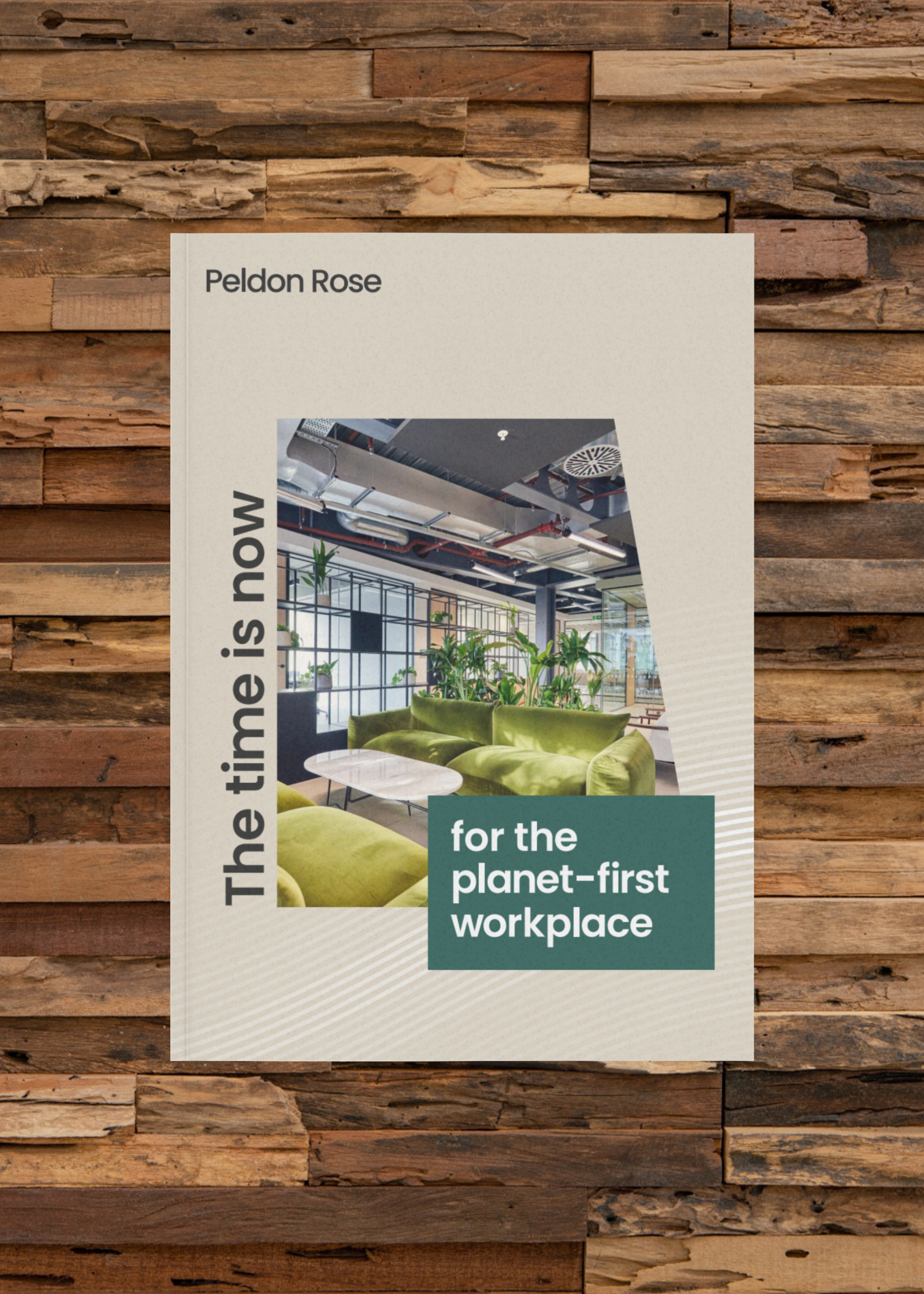How Change Management can help overcome business challenges
Learn how to use Change Management to easily solve problems with this three-step integrated process.
Our workplaces can and should be better neighbours, with opportunities to have a positive impact of local communities. Peldon Rose's guide to a planet-first workplace suggests that it’s time to invite the community in.

Our workplaces can and should be better neighbours. When a business moves into a new location, they’re also moving into a community and with that comes an opportunity to have a positive impact. This neighbourly nature isn’t about lending cups of sugar, it’s about bringing the community to the centre of our understanding of the purpose of the workplace, exploring how both can add value to each other.
The latest and final rallying cry from the Intergovernmental Panel on Climate Change (IPCC) earlier this year is that there is still time for action to avoid the worst effects of the climate crisis, but it needs to be big, and it needs to be now. To understand what acting means for our industry and what a planet-first workplace might actually look like, Peldon Rose brought together a group of experts across a number of businesses in the search for the beginnings of a solution, rather than just another reiteration of the problem.
Our guide to a planet-first workplace suggests that it’s time to invite the community in.


As businesses embrace hybrid working, they’re evaluating how to manage the lower workplace attendance that the model brings and learning how to do more with less in their workplaces. For many, this means optimising space to ensure they aren’t paying for empty desks while people work remotely. Even with this approach, our focus has been narrowly fixed on the 9 to 5 and fundamentally neglects evaluating environmental impacts of the workplace outside of the typical working day.
The weekends and evenings that our workplaces sit empty represent not just unused space, but wasted emissions, untapped potential for positive community impact, and added value for both tenants and landlords. There’s no shortage of options for putting this unused space to work, with examples including opening large meeting spaces up for community events, making offices available to local businesses or students, or even installing local vendors in unused floorspace.
Each business is different, and the workplace environment and way in which a company can interact with the community will vary from firm to firm. Certain sectors demand a level of privacy incompatible with shared space – regulations for financial services firms, for example, require areas where confidential information can be discussed. Similarly, different locations will complement different out of hours services, so supply should match demand and interrogating that demand is the perfect way of instigating conversation with the wider community.
It’s important to acknowledge that the use of the workplace by the wider community comes at a cost. A building that’s used outside of the typical ‘office hours’ will need additional security as well as increased maintenance and energy costs. Who foots the bill for this is worthy of thought and conversation in each and every instance, but the business case for landlords comes from making the space more appealing and simultaneously creating more opportunities for revenue streams.
For businesses touching down in a new location, it’s unrealistic to think of the relocation as cutting and pasting themselves somewhere new, and then existing in a vacuum. How settled employees feel in a new community is central to their propensity to buy into the change, and working proactively to make this relationship a positive one will be crucial to the success of any move. Additionally, welcoming the community in will bring with it an entirely new perspective and a diverse talent pool that already feels a connection to the business.


Incorporating community for a more sustainable workplace is a big change and involves tenants and landlords taking on a significant responsibility for those that they live alongside. But it’s also an opportunity to be a pioneer of this new approach and carve out new value propositions that will set a project apart in a crowded market. A sustainable workplace doesn’t just reduce emissions, it gives back, too. Offering more to the businesses and end users working within the building is one thing, but positively extending business impact outside of the usual four walls enables the workplace to become a pillar of positivity within local communities, and reach more lives for the better.
Discover our guide to a planet-first workplace.

Learn how to use Change Management to easily solve problems with this three-step integrated process.

Here are 5 office design essentials for a commercial office space. Get inspiration from our experts for a...

We discuss how we're planning to strengthen our ESG strategy and sustainability commitments by partnering...

An interview with interior photographer Soren Kristensen on design, photography and finding the light.

Your workplace holds enormous potential to improve your business performance. Get in touch today, and we will unlock that potential together.